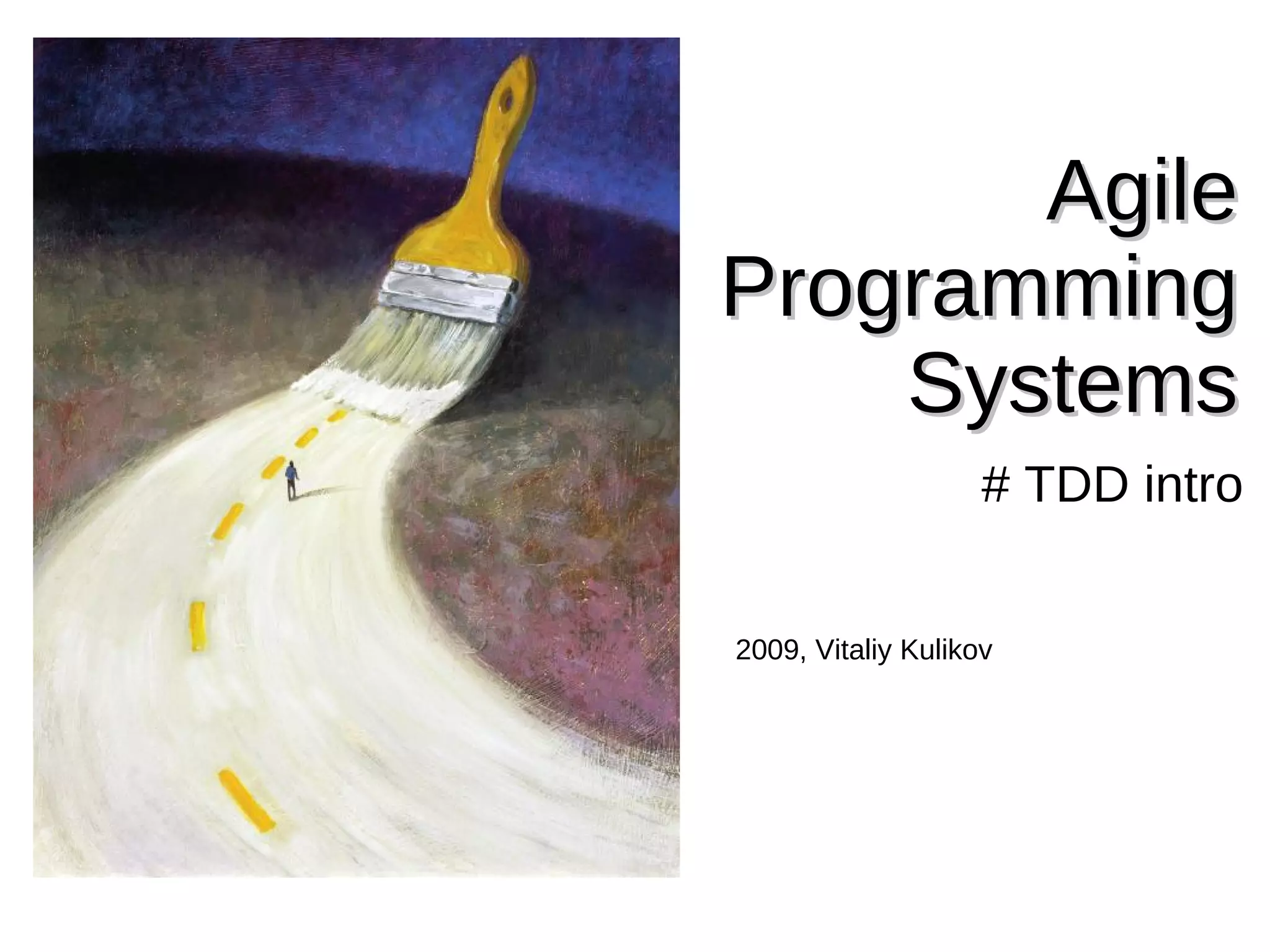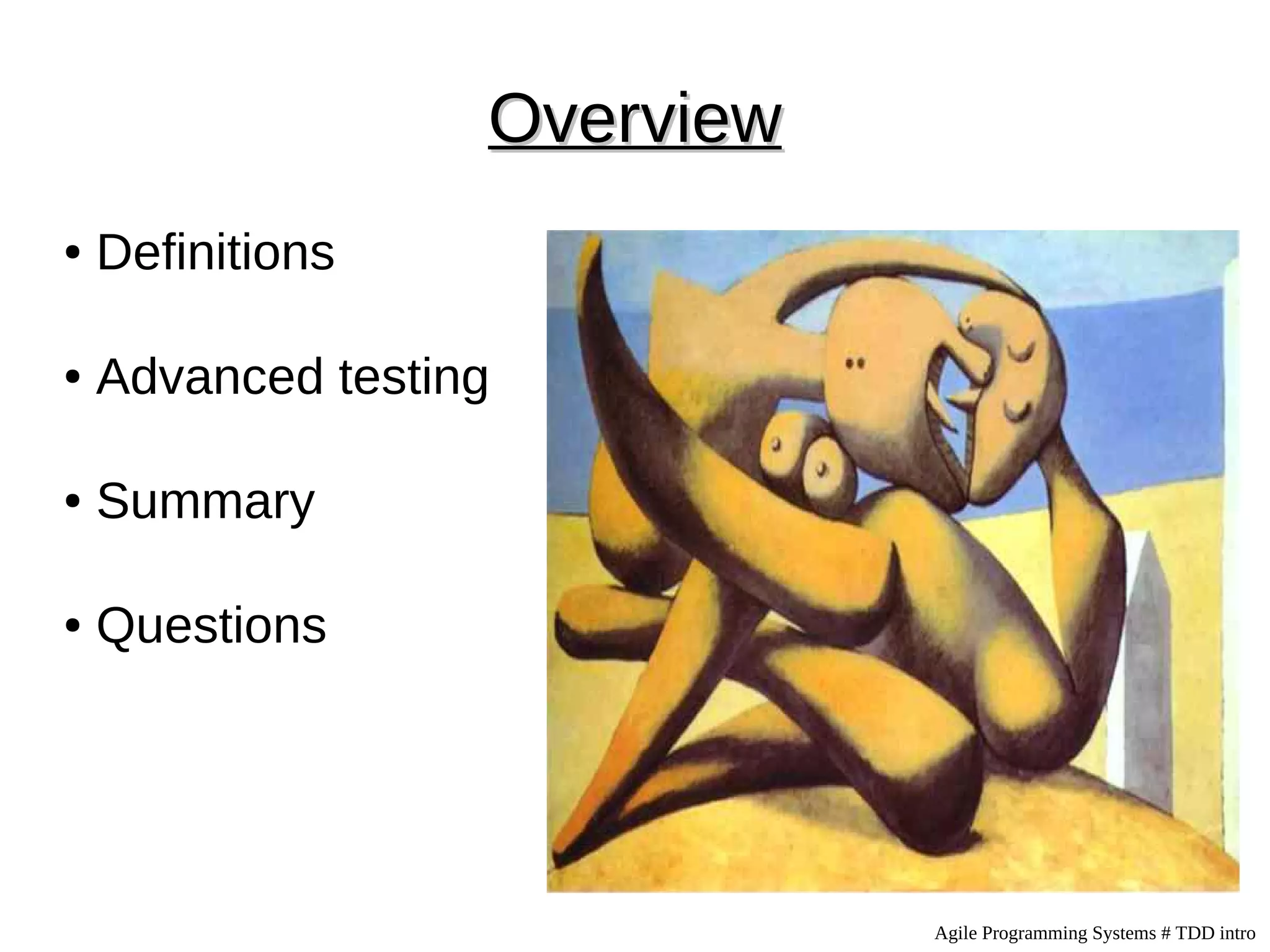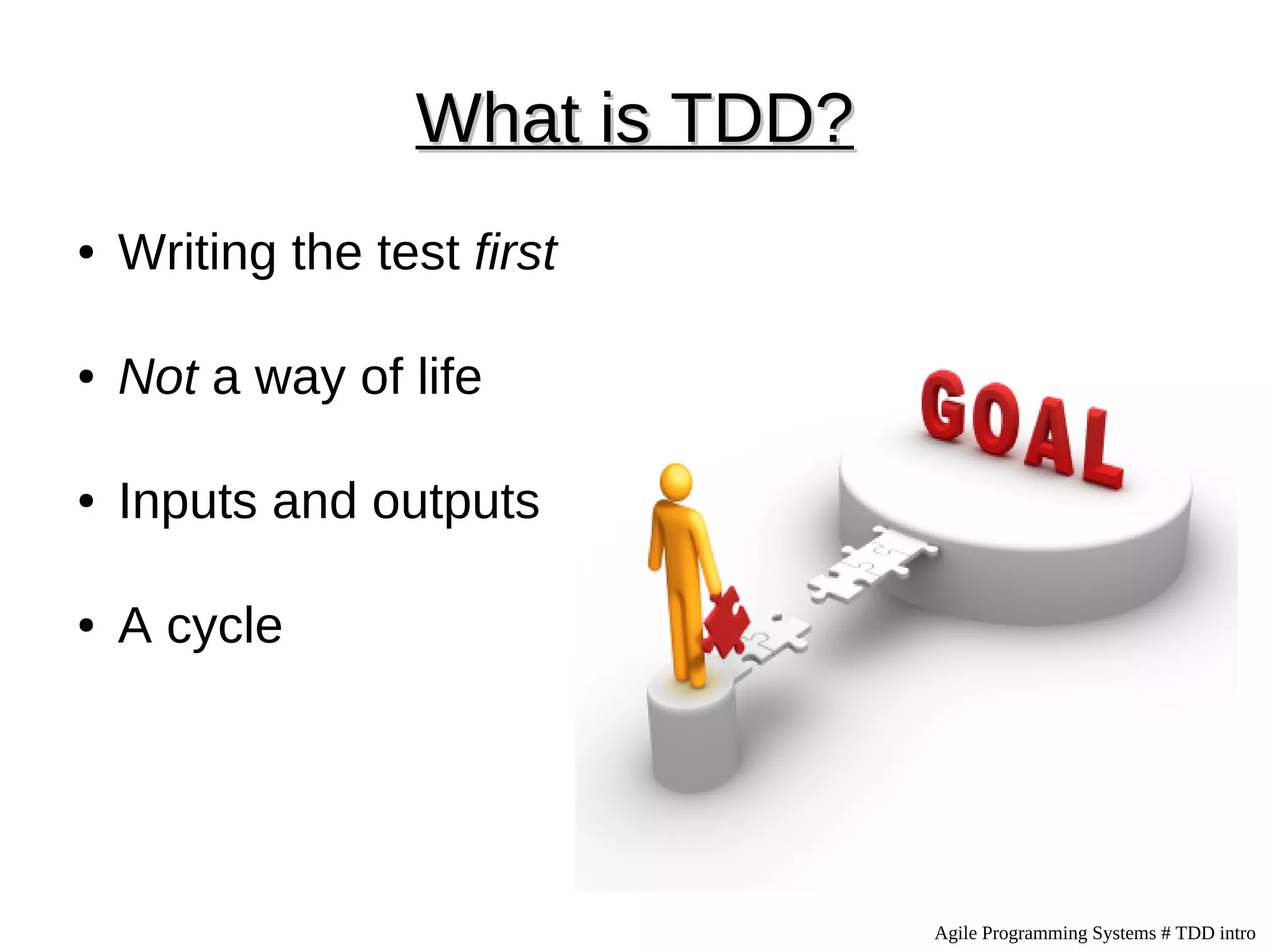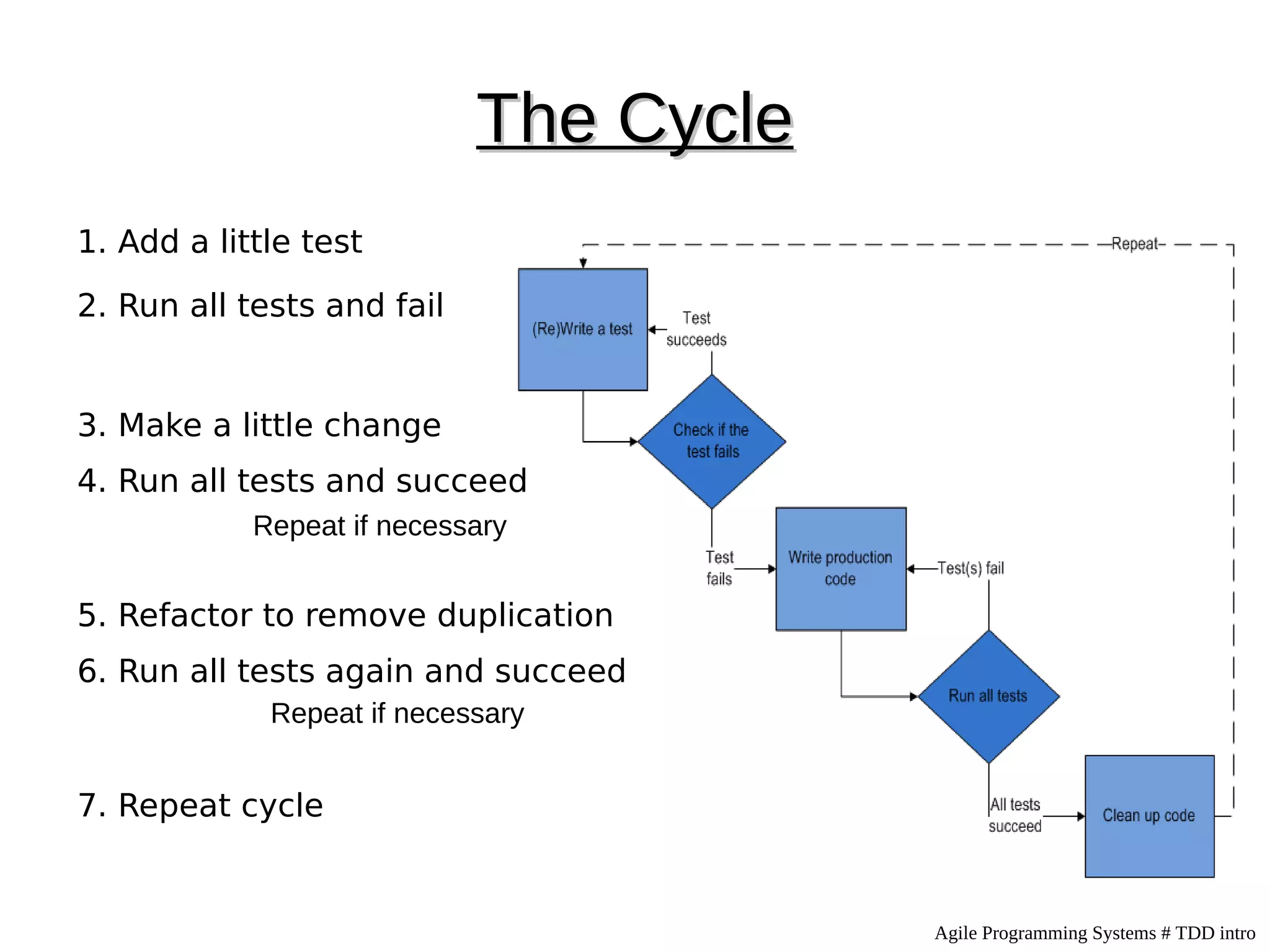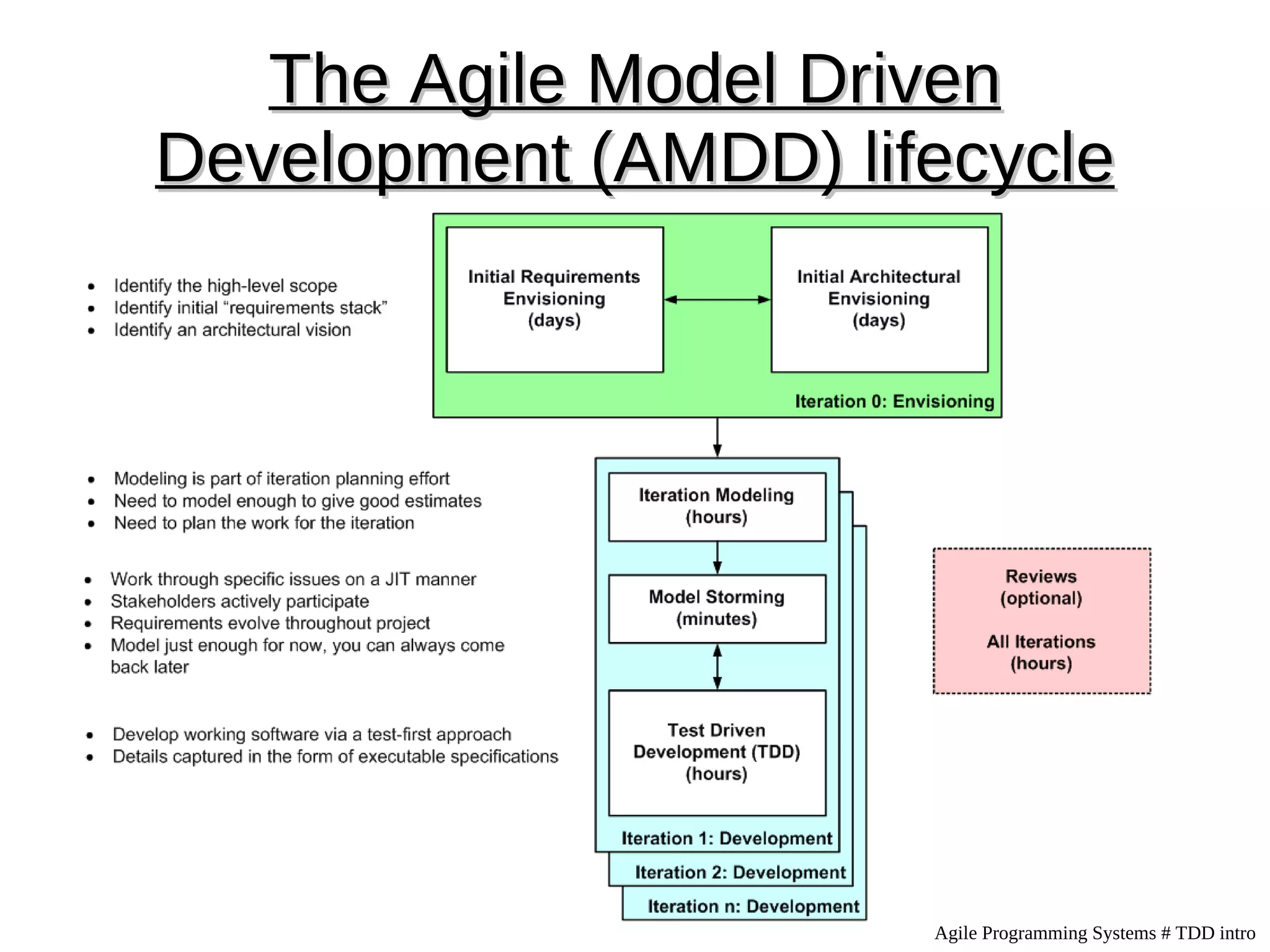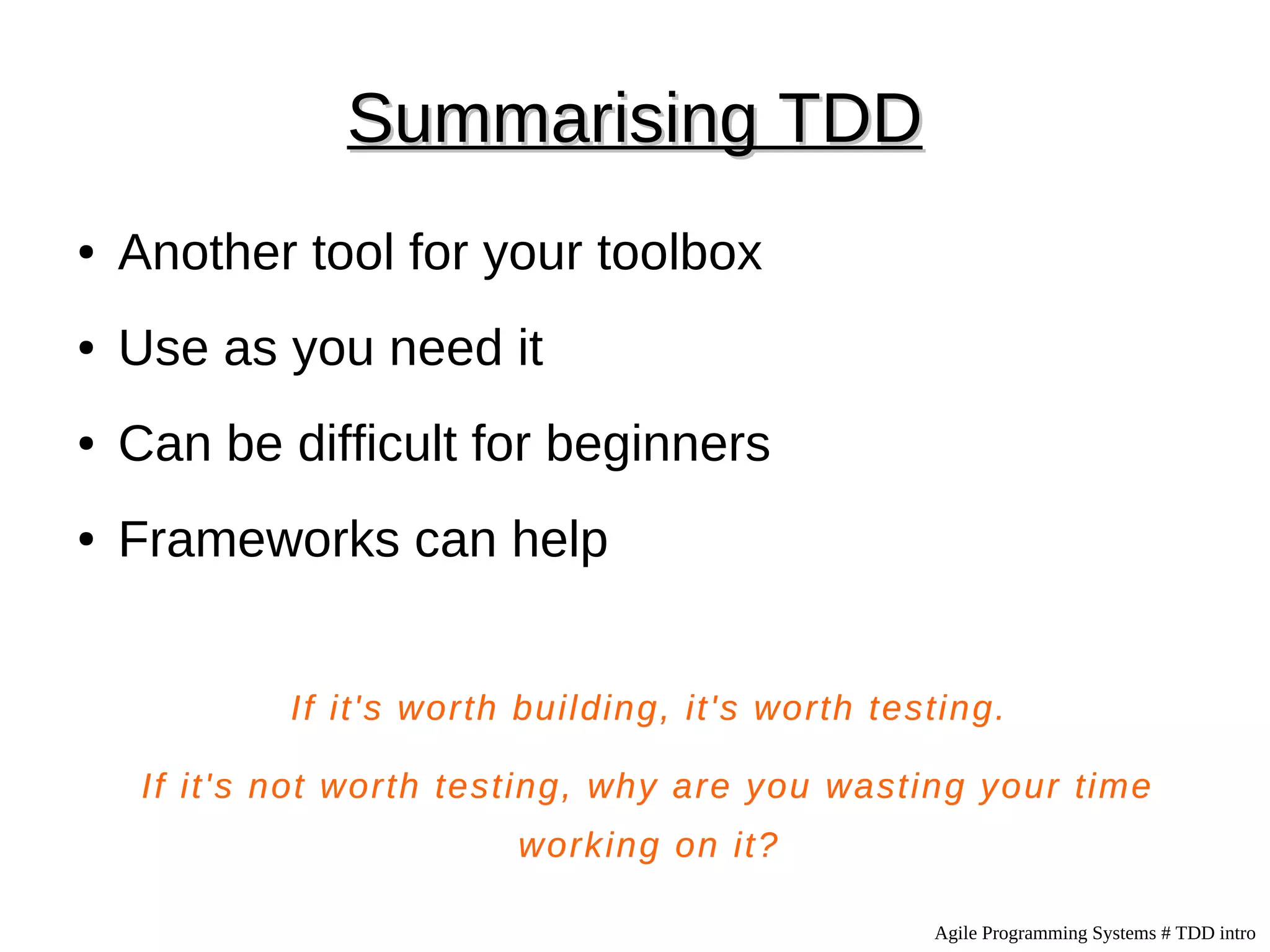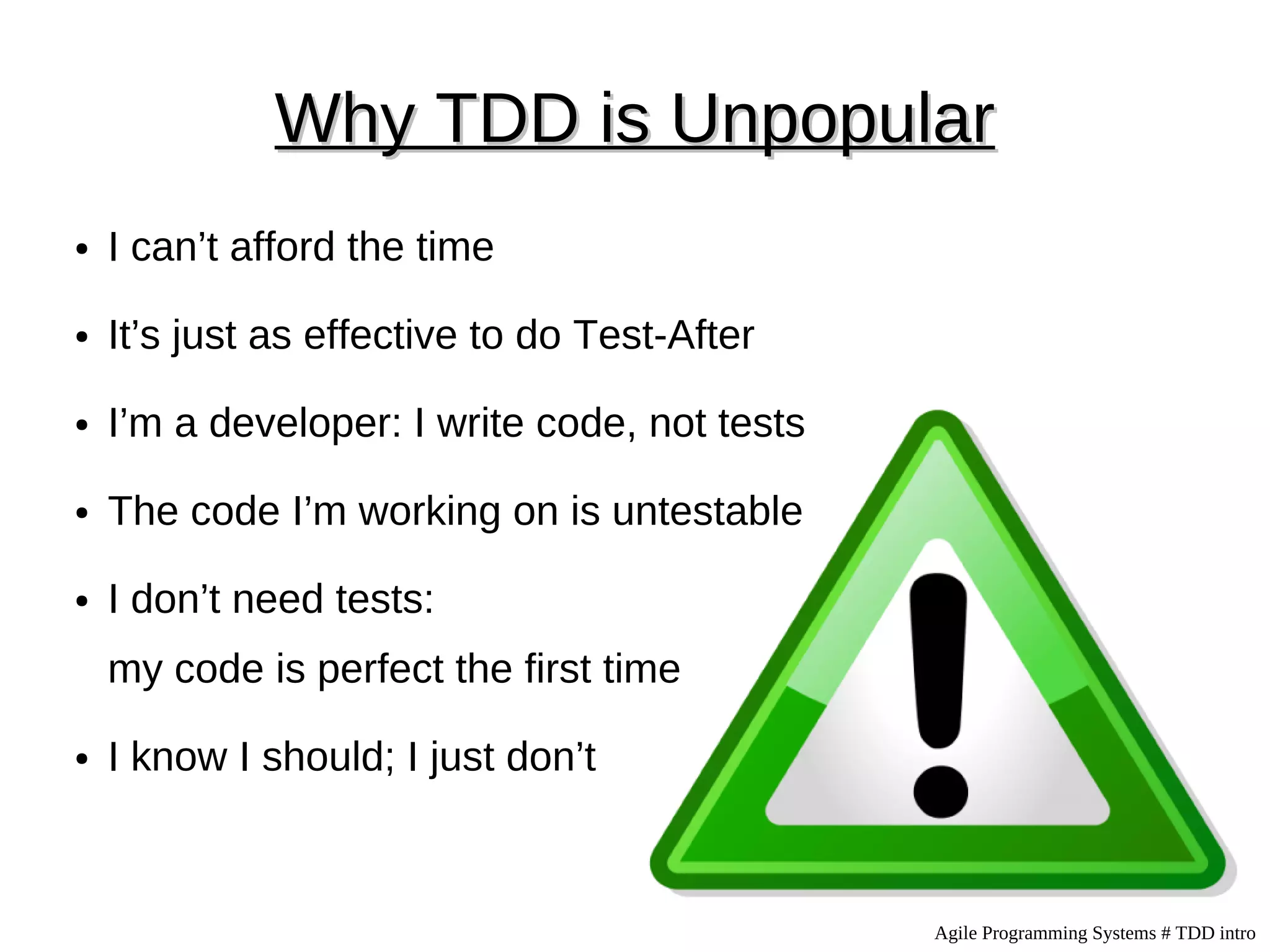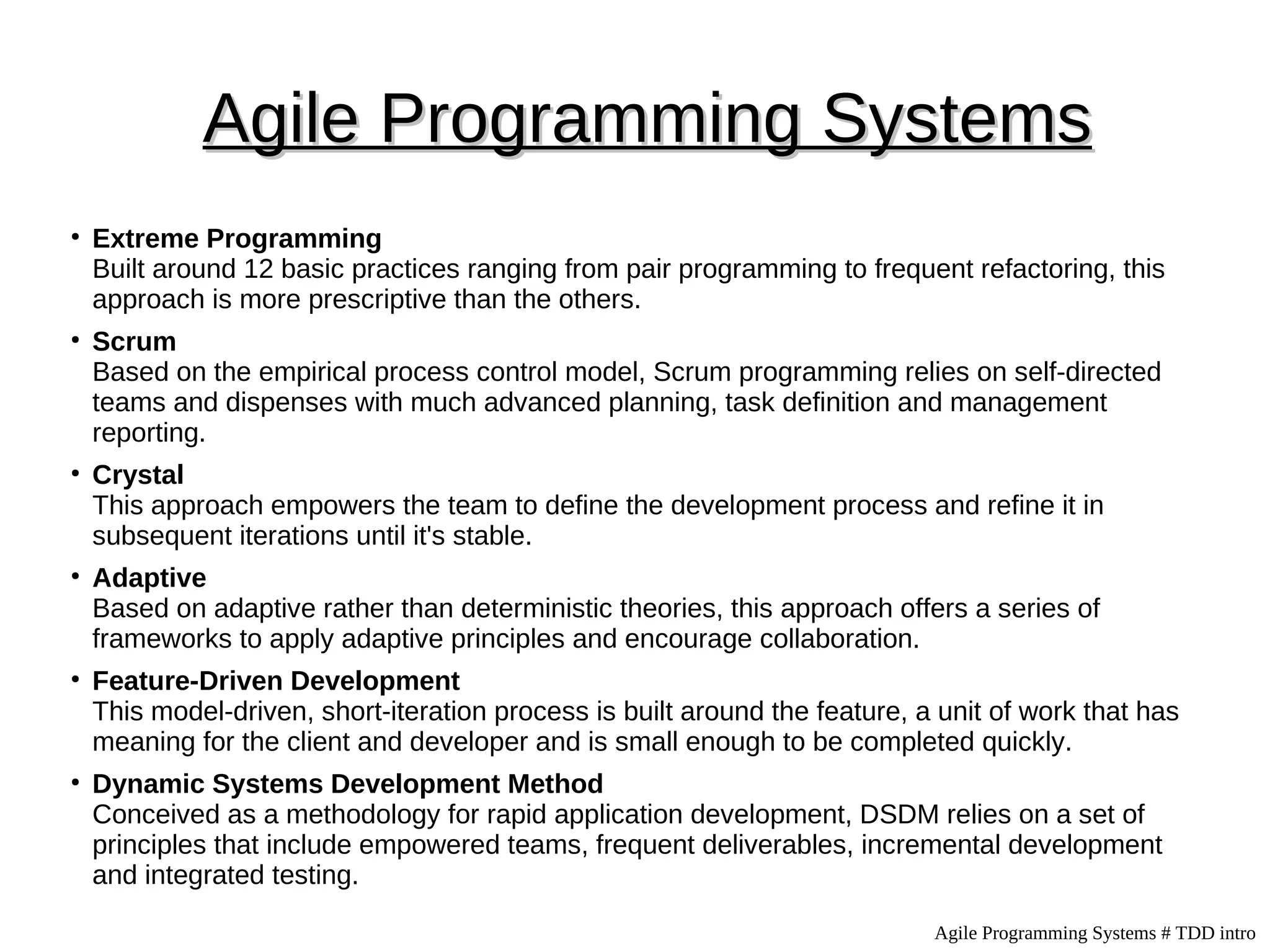The document introduces Test-Driven Development (TDD) in agile programming, outlining its cycle of writing tests before code changes and emphasizing its role as a tool in the development process. It discusses reasons for TDD's unpopularity among developers and compares various agile methodologies including Extreme Programming, Scrum, and Dynamic Systems Development Method. Key takeaways highlight the importance of testing and iterative development while suggesting that TDD can be challenging for beginners but beneficial when properly implemented.
